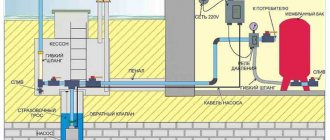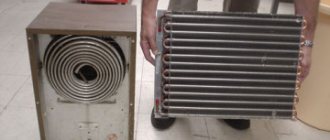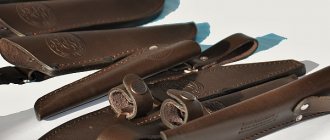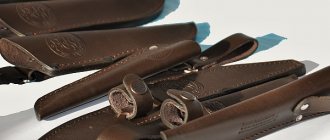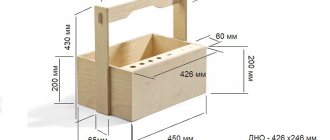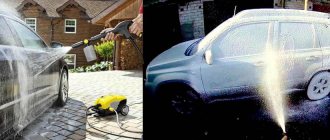The use of a compressor in an aquarium is explained by the need to supply air to the water and saturate it with oxygen. In most cases, a deficiency in the gas mixture is caused by excessively high liquid temperatures due to the action of room heaters. If you do not use a device for additional air supply, the likelihood of fish death under such conditions increases significantly. According to natural science laws, as water cools, the limit of oxygen saturation increases, therefore, its best supply will occur in reservoirs with cooled liquid.
- 1 Why do you need a compressor in an aquarium?
- 2 Mr. Tail recommends: the main types of professional compressors 2.1 Pump for an aquarium
- 2.2 Mini compressors
Why do you need a compressor in an aquarium?
Installing a compressor is one of the procedures aimed at maintaining a stable state of the biological system formed within the aquarium. It is necessary to solve both vital and aesthetic problems:
- Constant aeration. When the device operates, oxygen bubbles rise, which makes it possible to increase the proportion of the chemical element.
- Mixing layers of water. The compressor provides temperature control throughout the tank, acting like a fan, which minimizes the negative effect of heaters. Fluid stagnation is excluded due to its circulation.
- Improving the appearance of the fish house. Rising to the surface, air bubbles add aesthetics and attractiveness to the tank.
- Elimination of film on the top layer. If a compressor is not installed in the system, dust and bacteria form a layer that requires prompt removal.
- Creating conditions close to natural. Many types of fish need to imitate the flow in order to adapt to a new environment and be comfortable in it. When using the device, a fluid movement occurs, similar to the flow in reservoirs.
Mr. Tail recommends: the main types of professional compressors
According to the principle of operation, the compressor can be membrane or piston. In the first version, air comes from a chamber connected to a membrane. The reason for the movement is the pressure difference provoked by vibrations of the magnet (not the solenoid) acting on the membrane. This design does not require large amounts of energy during operation, rarely fails and is easily repaired. Diaphragm compressors (vibration) are cheap, but they are not recommended for use in aquariums larger than 150 liters.
In piston engines, air flows are pushed out due to the work of the piston - the rotational movements of the shaft are converted into vibrations. This device is designed for tanks with a volume of about 200 liters. It has greater productivity than the previously mentioned type, and durability is approximately at the same level. Even powerful piston compressors can be chosen for use in rest rooms, as they are almost silent. The disadvantages include increased electricity consumption and high cost.
Aquarium pump
Separately, it is worth highlighting the pump - a type of circulation pump that also performs the functions of a filter. It is capable of working both to purify liquid (air filter) and as a means of saturating it with oxygen. The design includes:
- filter compartment;
- motor (rotor with impeller and stator);
- aerator.
Dirt removal is carried out thanks to a multi-layer flow filter. The pump equally successfully creates air flows in aquariums of different sizes.
There is almost no noise during operation, glass damage is excluded due to the immersion of the structure in the tank.
Mini compressors
Separately, you can provide a description of water mini-compressors. They are designed for small aquariums in situations of temporary power outage. Using batteries, stand-alone devices operate loudly enough for no more than six hours, after which they need to be turned off.
Manufacturing process
The sequence of assembling the structure with your own hands depends on which compressor the owner of the aquarium chose. And this choice is determined by several factors. Having prepared the necessary tools and materials, you can begin assembling the model you like.
Conventional mechanical supercharger
It is considered the easiest to manufacture of all types of compressors that you can make yourself. To do this you need:
- take a 3-way valve with three plastic tubes secured to it with clamps;
- one of them is connected to a pump (from a bicycle or car);
- the second - with a ball or an inflatable chamber;
- in the third, the end is sealed, holes are pierced, and a weight is tied so that it does not float up.
By loosening the clamp on the nozzle to the desired degree, you can obtain sufficient air outlet in the form of bubbles through the aquarium sprayer. For the device to work, you need to pump the ball or camera well with air. This aquarium aerator works for a long time due to the absence of electromechanical units. A significant disadvantage is that air will have to be constantly pumped into the chamber manually.
Battery operated with cooler
Functional aquarium compressor powered by batteries. There is little noise from it, as well as troubles in manufacturing. You need a cooler motor, to which 2 wires are attached, a plastic bottle cut in half (the motor is secured inside the half with special glue).
The spray pipe is prepared as in the previous case (the end is sealed and holes are made with a needle). After connecting the wires to the battery pack, the halves of the bottle are again aligned and sealed with tape.
4 chamber
To make it you need 4 plastic bottles, 4 round inflatable balls, 4 syringes, a battery, a gearbox and a switch (1 piece each), wires, 21 types of glue, a soldering iron and a knife (sharp), as well as paper clips, a dropper and wires. In the video, the master clearly and clearly explains the procedure for painstakingly assembling a 4-chamber mini-compressor:
How to make a compressor yourself
The task when creating a device is to implement air intake with its subsequent controlled flow into the aquarium. For assembly you need available parts and tools:
- a rubber chamber that acts as a container;
- hand pump;
- tee;
- tube (material – plastic) from a dropper with clamps;
- clamps;
- electric motor (compact, low power).
It is possible to create a stationary compressor or one that runs on batteries. To start working on the first one, you need to take a tee, a chamber, a pump and a tube with clamps. Procedure:
- Cut the plastic tube into 3 parts. One should be longer than the others.
- At the end of a long piece, leave a lot of holes with a needle and process it with a lighter, attach a clip.
- Use a tee to fasten all 3 parts, securely connecting them with clamps.
- Attach one of the two small pieces to the pump and secure it with a clamp from the tube, attach the other to the chamber.
- Pump air into the chamber as much as possible. Lower the long part with the needle marks into the tank and open the outlet flow by activating the clamp that regulates the air flow.
A compact homemade battery-powered compressor for an aquarium is useful on the road and during a power outage. To create it you need to follow the instructions:
- Cut a plastic bottle or canister into 2 parts.
- Solder several wires to the motor and attach the cooler.
- Secure the device to the bottom of the bottle with glue.
- Attach a tube to the neck, having first soldered its end, and leave many holes on the other part of the tube with a needle.
- Attach a button and a hole for batteries to the wires, close the bottle.
What you need to make a pump
To make an aquarium pump with your own hands you will need the following components:
- 20 cc syringe;
- Silicone tube, with a diameter approximately slightly smaller than the diameter of the syringe;
- Electric motor 3 or 5 volts;
- Some other materials. In particular, you will need caps from 1.5 liter PET bottles (3 pieces), a piece of thin plastic, you can take from a CD box.
As for the tools for making a homemade aquarium pump, you will definitely need a hot glue gun, a cordless screwdriver and a small drill. You will also need a sharp knife and scissors to cut all materials. So, let's go.
How to install
In order to reduce energy consumption and noise, it is recommended to install equipment above the water level. External placement directly on the lid is dangerous due to the vibration generated during operation of the device. It is best to place it on a table or shelf; you can fix it with a nail on the wall (mounted option). Be sure to maintain a distance between the compressor and other electrical appliances, especially a computer and other expensive equipment.
If such an installation is not possible, a non-return valve will be required, with which the device will be placed in the aquarium cabinet.
Sprayers and hoses are placed on the bottom, which can cause them to float to the surface and greatly reduce the efficiency of the compressor. The problem can be easily solved on your own with the help of objects that perform decorative functions in the aquarium (driftwood, stones and other weights).
If the device is located below the water level, you need to include a check valve in the circuit. Its membrane regulates the movement of liquid so that it flows only into the aquarium.
At the first stage, the hose is cut crosswise, leaving a section protruding no more than 4 cm above the wall. Then each side must be attached to the check valve nozzles. After connecting the hose to the compressor, you should check whether aeration is effective.
DIY silent compressor
Any homemade unit can be made silent. With a membrane compressor, noise during operation can be produced by the contact of the membrane with the convexity. It is enough to make a cut to get rid of the annoying sound. You can use different soundproofing options with your own hands - foam rubber, a dish sponge placed under the device, a soundproofing box.
The reason for loud operation is clogged or loose fasteners - in this case, it is enough to fix or clean. A simple mechanical supercharger is considered the quietest in operation, especially if the air flow is supplied in slow mode.
Knowing what its operating principle is based on (initially air is taken in, and then it slowly enters the aquarium), such a device can be made with your own hands.
To make it you will need the following materials:
- a plastic tube (the ideal option is a tube taken from a medical dropper with a clamp);
- pump;
- rubber chamber.
We perform the following steps: Take 3 tubes and move them away from the tee in the following directions:
- to the pump;
- to the camera;
- the latter (a tube with a clamp from a dropper) will play the role of a hose.
At the end, the tube must be well closed with any material, making a stopper. Before the insulated outlet, several punctures must be made with a needle to allow air to escape.
This DIY compressor will work as follows:
- the tube leading from the pump to the chamber will collect air;
- when the chamber is completely filled, the tube from the chamber to the outlet tube will come into operation;
- The air supply speed is adjusted using a clamp.
It is known from practice that the most optimal mode will be a slower air supply.
Repair
A malfunction of the compressor mechanism is indicated by excessively loud noise during operation. If a membrane aerator is installed, the reason in most cases is that the valves are too dirty. To solve the problem you need to do the following:
- Turn off the device.
- Remove the cover and use tweezers to pull out the valves. When held with glue they come off.
- Clean the surface with a cotton swab dipped in alcohol.
- Remove dirt from air ducts and valve seats.
- Let dry and assemble.
During prolonged use (more than 12 months), the compressor membrane may rupture. Failure can be determined by power loss and loud noise. Replacement is not difficult - just unscrew the cover, find the damaged elements, pull them out and install new ones.
Piston compressors often have to be turned off because the armature winding of the motor has burned out. This is due to natural wear and tear or voltage surges, or water getting inside the device. To solve the problem, you should contact service centers.
DIY aquarium sprayer
An alternative to a submersible aerator is considered to be a homemade water sprayer, which can be easily made at home without any special knowledge. It can be collected in one of two ways:
- Take a short rubber tube and put it on the outlet hose. Using a needle, make small holes on each side and plug the free part. There is an option to do without a nozzle, but it is better not to spoil the design.
- You can add aesthetics to your aquarium by making bubbles rise from natural rocks. In this case, you will need a breed that does not affect the quality of water (an indicator of acid and alkali), as well as a mount that securely fixes the hose, the length of which should be comparable to the length of the aquarium. The holes are created in groups at the same distance from each other for uniform aeration. The tube is placed on the bottom, after which the diffuser is masked with plants.
If there is a low, elongated “can,” air should come from several groups of points. Otherwise, aquarium animals will be localized in one part of the tank, which will negatively affect the appearance.
DIY instructions
You can make an aquarium aerator yourself in 9 steps:
- Remove the seal located on the inside of the plastic cover. The lid will serve as the basis for the drum.
- Mark 2 holes on the lid with a marker with a diameter suitable for the plastic tube. Make holes in the marked locations.
- Cut a horseshoe-shaped piece of rubber to fit the lid. This will be a homemade valve for the compressor. Glue the piece to the inside of the lid, covering one of the holes.
- Cut the balloon lengthwise and place it on the bottle cap. Secure with tape. Thus, on the one hand, the lid will be tightened with a ball, and on the other, there will be holes in it.
- Mark a circle on a plastic card that is smaller in diameter than the lid. Cut out and glue a lollipop stick to it.
- Glue the other side of the plastic circle to the “drum”, onto the circle covered with the ball. The structure should hold tightly, it should not put pressure on the ball and pull the membrane behind it.
- Cut a piece from the hot glue stick and make a hole in the center and side. Insert a motor into the central hole and a wire into the side hole.
- Mount the motor on a wooden stand. Trim the tube attached to the drum so that it fits on the board.
- Fasten the structure. Connect the tube and motor.

